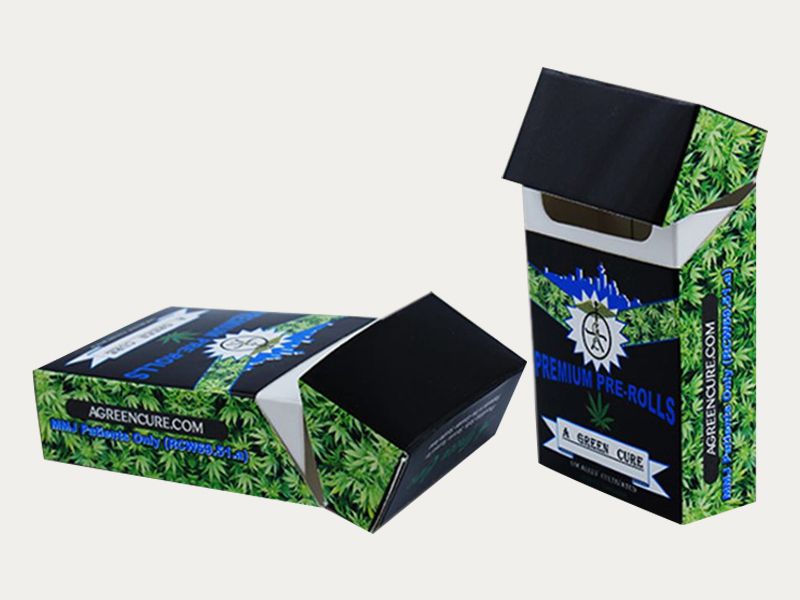Packaging is more than just a protective layer for a product. It plays a direct role in defining how a brand is seen. In the tobacco industry, where many products are similar, custom cigarette boxes packaging makes a powerful difference. For cigarette brands, especially, the box is not just a container. It is a tool to stand out, connect with the target market, and build long-term identity.
Visual Identity Shapes First Impressions
The first thing a customer notices is how the custom cigarette boxes wholesale looks. Design elements such as colors, fonts, shapes, and images give strong signals. A brand that uses bold colors may appear modern and daring. On the other hand, muted tones might reflect elegance and tradition. These visual choices can help connect the brand with specific emotions and values.
Simple packaging often sends a message of minimalism or luxury. Intricate designs may suggest creativity or cultural heritage. Since cigarettes are often displayed publicly, the look of the box becomes part of a user’s personal image. People might choose a brand not only for the product but also for the statement it makes through its design. This is how packaging turns into a silent salesperson.
The role of visuals extends to how memorable a brand is. When someone sees the same design repeatedly, it builds brand recall. Over time, this helps strengthen the identity of the cigarette brand in a crowded market.
Consistency Builds Trust Over Time
Trust is not built in a single day. It develops through consistency. Cigarette boxes that follow a clear brand theme across all lines and sizes help develop that trust. When customers see familiar designs, they feel more confident in the quality and experience of the product. This consistent presentation helps support loyalty.
Brand guidelines ensure the design remains the same across different packaging forms. From a standard-sized box to a limited-edition pack, using the same logo placement, fonts, and style reinforces identity. This is why many leading cigarette brands never drastically change their packaging. Instead, they make subtle updates that feel familiar and fresh at the same time.
This kind of consistency tells consumers that the company values its image. It also reflects a reliable production process. In industries where image plays a role in choice, consistent packaging supports a long-term brand presence.
Packaging Enhances Emotional Connection
Design can influence emotions. A cigarette box that feels personal or reflects a lifestyle may create a deeper connection with the user. Some people may choose a certain box because it matches their personality or beliefs. This is not by accident. Brands often research their market to develop packaging that reflects what their audience wants.
When someone sees packaging that reflects a social cause, culture, or design style they care about, they feel seen. This leads to a positive emotional reaction. Even small features, like embossed textures or a specific shade, can make the customer feel special. In turn, this helps form a connection between the brand and the individual.
Over time, this connection grows stronger. The box becomes more than packaging—it becomes part of a daily ritual, a style statement, or even a memory. That’s the power of emotional branding done through thoughtful packaging.
Custom Features Highlight Uniqueness
In a market where several cigarette brands offer similar products, customization helps to set one brand apart from another. Brands that offer unique design elements or custom shapes often catch the eye more quickly. Special finishes like matte, gloss, or soft-touch coating can create a different feel when held. This adds a new level of uniqueness.
Die-cut windows, magnetic closures, or slide-open boxes are other ways to create packaging that stands out. These features not only make the product look better but also offer convenience. Customers remember these details. It makes the brand easier to recall and recommend.
Custom packaging also allows brands to react quickly to market trends. For example, if a new cultural movement gains attention, companies can create limited-edition boxes to reflect that theme. These unique elements increase shelf appeal, which leads to better sales and stronger identity.
Sustainability Adds to Brand Image
Modern consumers care about more than just the product. They want brands that share their values. One major value today is environmental responsibility. When a cigarette brand chooses eco-friendly packaging, it sends a clear message. It shows that the company cares about the planet and the future.
Using recyclable or biodegradable materials helps shape a responsible brand image. Even using less ink or avoiding harmful chemicals during printing can improve how the brand is viewed. Some companies also use minimal packaging to reduce waste, and this simple approach can still look premium.
Customers are likely to support a brand that aligns with their personal beliefs. For younger consumers especially, sustainability plays a key role in decision-making. Packaging that reflects this can build a better image and increase loyalty.
Security and Authenticity Features Build Value
Security features are becoming more common in cigarette packaging. This includes things like tamper-evident seals, holograms, or barcodes for tracking. While these are important for safety and law compliance, they also help define brand identity. When a brand adds features that show it values protection and authenticity, customers take notice.
These elements help prevent counterfeiting, which can damage a brand’s image. A customer who unknowingly buys a fake product and has a bad experience might avoid the brand altogether. So, adding protection helps guard not just the product but the brand’s name.
Holograms and unique seals also make the box look more premium. This adds value in the eyes of the buyer. It makes them feel they are getting something trustworthy and worth paying for.
Limited Editions and Seasonal Designs Attract Attention
Special editions are a strong way to update packaging without changing the brand too much. Brands often launch limited-edition cigarette boxes during holidays, festivals, or cultural events. These special designs grab attention and spark interest. Because they’re temporary, they also create urgency to buy.
Many customers enjoy collecting these boxes. This adds a fun and emotional layer to the product. Limited designs often reflect themes that matter to the target market. This helps the brand connect with culture and trends without needing to change the base product.
When done right, these editions reinforce the brand’s creative identity. They show that the brand is active, current, and capable of staying fresh. It also builds anticipation for what’s coming next, keeping customers engaged.
Market Positioning Through Packaging
How a cigarette brand wants to be seen plays a role in its packaging. Is it a luxury brand? A budget option? A lifestyle-focused brand? The box design should reflect that choice. Colors, materials, and design all signal where the brand stands in the market.
For high-end brands, metallic foils, embossed logos, or heavy-duty boxes add a sense of class. For budget lines, a clean and simple box may reflect affordability. For lifestyle brands, the packaging often features trendy patterns, youth-focused graphics, or collaborations with artists.
This type of design clarity helps avoid confusion. It helps consumers know what to expect from the brand. When packaging matches the price point and brand promise, it supports a stronger, clearer identity in the market.
The Role of Wholesale Customization
When products are produced in bulk, it becomes easier to maintain brand consistency across large areas. Working with custom cigarette boxes wholesale suppliers gives businesses more control. This allows for consistent design, better cost management, and custom solutions on a bigger scale.
Bulk orders also make it easier to experiment with different designs. If one theme works well, it can be scaled up quickly. If it doesn’t, changes can be made with less risk. This flexibility is useful for marketing campaigns, seasonal packaging, or regional designs.
Wholesale customization also allows small brands to access high-quality packaging at lower costs. This levels the playing field and allows even smaller companies to present a strong, branded identity. It becomes easier to compete with bigger names while maintaining design control and consistency.
Conclusion
The design of a cigarette box is far more than surface decoration. It plays a deep role in shaping brand identity, trust, and customer loyalty. Every part of the design, from the material to the graphics, can influence how a brand is viewed. In a competitive market, packaging is a powerful tool that connects with people, communicates values, and secures a lasting position in the market.





